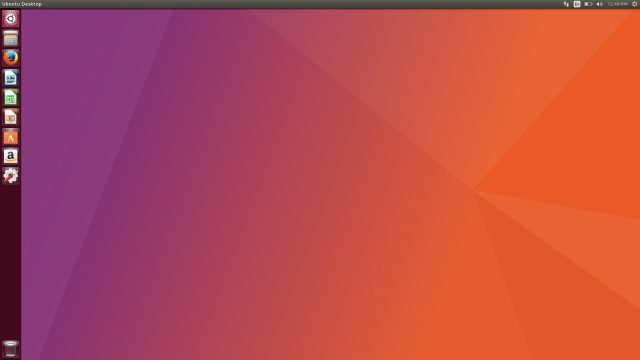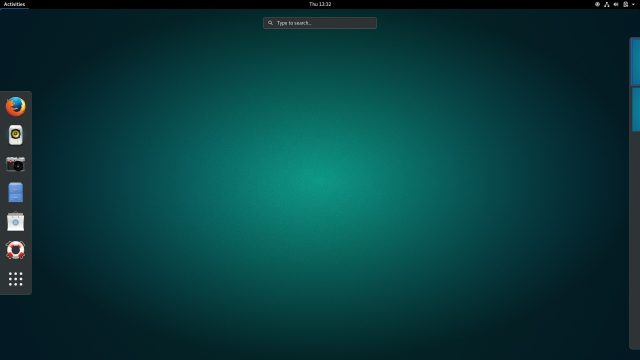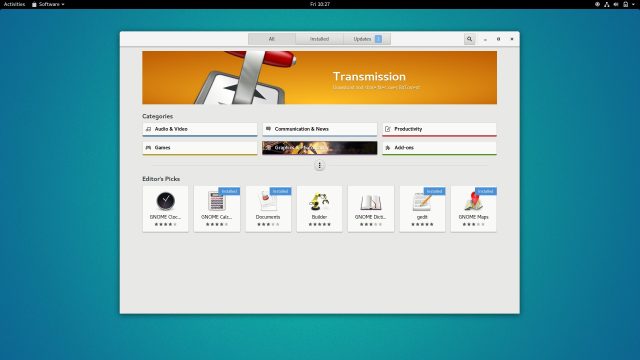 end of the alphabet with.... Zesty Zapus. We had to use this German children's book (Bilderbuch fur Kinder) to learn about this "meadow jumping mouse" (bottom right)."/>
end of the alphabet with.... Zesty Zapus. We had to use this German children's book (Bilderbuch fur Kinder) to learn about this "meadow jumping mouse" (bottom right)."/>
Last month, it finally happened. Six years after its tumultuous switch from GNOME 2 to the homegrown Unity desktop, Canonical announced it was abandoning work on Unity. Going forward, the company will switch the default Ubuntu desktop back to GNOME beginning with next year's 18.04 LTS release. This means Canonical is also abandoning the development of the Mir display server and its unified interface of Ubuntu for phones and tablets. The company's vision of "convergence," as Canonical founder Mark Shuttleworth termed it, has officially died.
Shuttleworth posted that news just a few days before Ubuntu 17.04 arrived, which took a considerable amount of wind out of the sails for this update to Canonical's flagship Unity-based Linux desktop. To be fair, however, the last few Ubuntu desktop releases haven't had much wind in their sails to start with. There have been a few feature updates and some work on bringing in more up-to-date GNOME and GTK elements, but by and large they've been maintenance releases.
While Ubuntu 17.04 offers a few new features, bug fixes, and improvements over its predecessor, it qualifies as a significant release because it will likely be the last version of Unity that Canonical ships. Technically Ubuntu 17.10 will come later this year, but it seems unlikely the company is going to put much effort into developing a desktop it is abandoning.
In fact, Ubuntu's twice-yearly update schedule has lately felt more like a burden the company has to deal with while the real work of building Unity 8 happened in between. And though Unity 8 did indeed look promising, unfortunately it's not something that mobile carriers and phone makers seemed to want. As Shuttleworth wrote in his announcement, "what the Unity 8 team has delivered so far is beautiful, usable, and solid, but I respect that markets, and community, ultimately decide which products grow and which disappear."
So Unity 8 is going the way of the Dodo, which leaves the Unity-based default version of Ubuntu 17.04 as a kind of living fossil. The Ubuntu GNOME project will be the default release of Ubuntu this time next year.
That's not to say that 17.04 is abandonware. And it will live on in the Universe repos for anyone who'd like to continue using it. So if you're fond of the Unity interface, there's no need to panic just yet. There have already been stirrings of a community around it that would like to continue development. Even if there are just a couple of people fixing bugs and keeping the lights on, you should be able to get a good five more years as a Unity diehard. (Canonical is committed to maintaining it for the five-year release cycle of 16.04, which lasts until April of 2021.)
What makes Shuttleworth's announcement a little odd is that Unity 7 is a very mature and stable desktop. Why not stick with Unity 7? Why move to GNOME? The answer seems to lie in how Canonical is allocating resources. Canonical doesn't want to employ an army of programmers to keep Unity 7 secure and improving when the GNOME project is available for free with an army of programmers not paid by Canonical maintaining and improving it.
That means the future of Ubuntu, then, looks a lot like the future of, well, any other distro that uses GNOME by default. That's a little disappointing, especially if you (like me) happened to really want an Ubuntu phone. On the other hand, I have fond memories of pre-Unity Ubuntu... which, of course, also used a more or less stock version of GNOME.
It's also worth noting that there are several other 'buntu flavors out there for anyone who doesn't want to use GNOME, and I've recently taken a closer look at two of them—Ubuntu MATE and Xubuntu. But when it comes time to test this latest release, it's difficult if not impossible to evaluate Ubuntu 17.04 without simultaneously pondering the future of Ubuntu and GNOME, too.
Ubuntu 17.04
There's more to a distro than its default desktop, and Ubuntu 17.04 is no exception. There's quite a bit of new stuff in this release, but possibly the best news is that Ubuntu is now using Linux kernel 4.10. That means your Kaby Lake processors are fully supported (as are AMD Ryzen chips for those who love rooting for the underdog). There's also some support for NVIDIA's Tegra P1 and some improvements to the open source NVIDIA (Nouveau) drivers.
Another big change that most people will never even notice is that Ubuntu 17.04 switched from a swap partition to a swap file. You could see some speed improvements from that in some situations, and it makes your swap partition unnecessary, which saves a step in the installation process. The exception here is Btrfs, which does not support swap files. If you're using Btrfs, you'll need to opt for manual partitioning and create a swap partition yourself.
Also worth mentioning is Ubuntu 17.04's support for the new "driverless" printers. These printers use the IPP Everywhere and Apple AirPrint protocols, and connecting them to your Ubuntu desktop should be, in Canonical's words, "as easy as connecting a USB stick" (I don't have a printer to test with).
This release also sees the usual slew of application updates for Ubuntu's stock apps. GNOME-based apps have mostly been updated to GNOME 3.24, though there are a few that linger at older versions (Terminal and Nautilus for example).
Updates to Unity 7 include... well, nothing really. Unity is dead, long live GNOME.

Ubuntu GNOME 17.04
Shortly after Shuttleworth announced that Unity 8 and accompaniments were dead and that Ubuntu was returning to a stock GNOME desktop, the Ubuntu GNOME team posted a note saying that "there will no longer be a separate GNOME flavor of Ubuntu." Instead the development teams from both Ubuntu GNOME and Ubuntu Desktop will be merging. The "flavor" itself will be merged into mainline Ubuntu, and, starting with 17.10, if you update Ubuntu GNOME you'll actually be sideways-updating to just Ubuntu.
Shuttleworth's announcement says that Ubuntu will be making minimal customizations to the GNOME interface, and, since the Ubuntu GNOME project currently makes very few customizations, it seems reasonable to assume that today's Ubuntu GNOME is not too far off tomorrow's Ubuntu.

Ubuntu GNOME 17.04 uses GNOME 3.24, having leapfrogged over 3.22 from 3.20. There's quite a bit of new stuff in this release, including a built-in new feature called Night Light, which automatically changes your monitor color to reduce the blue light emitted by your screen at night. Night Light is GNOME's version of RedShift or f.lux, but, because it was developed by GNOME, it actually works with Wayland, whereas the others do not. As someone who spends most of their time in front of a screen at night, this is reason enough for me to switch to GNOME. And I'm happy to report that it just works.
GNOME's Calendar app gets a much-requested Week view with this release, though it still lacks support for a broader range of calendars (if you use Google Calendar it works fine, everything else has caused me problems).
Like the Unity desktop, the Ubuntu GNOME devs have stuck with older versions of some apps, including Terminal, Nautilus (both at GNOME 3.20 versions), and Evolution, which remains (for stability, say the release notes) at the GNOME 3.22 version.
One thing that's not going away with Unity 8 is Snap packages. A "snap" package is designed to work across distros and is already widely supported (Canonical says 10 distros support Snaps as of this writing). Snaps offer sandboxing for improved security and quicker updates (since they come direct from the developer, rather than via the package manager). Because there can never be just one version of something in the Linux world, there are also Flatpaks. Roughly the same as Snaps (though they differ considerably in implementation), Flatpaks are also cross-distro, and support for them in GNOME Software has improved quite a bit in this release, and support is installed by default. So with Ubuntu GNOME you can easily install both Snaps and Flatpaks.

The Software app (still at GNOME 3.22) also now supports installing GNOME Shell extensions, which, if you're hoping to replicate the experience of Unity 7 in GNOME, you're going to need to learn to love.
Ubuntu GNOME does not ship with the full complement of GNOME apps, and I would expect Ubuntu to follow this since apps like Brasero, Evolution, and Seahorse are of limited audience at this point. The only possible exception is Evolution, since Thunderbird comes up short in some scenarios. All three apps are of course available for install via the Software app. Likewise there are a couple of new GNOME apps that aren't installed by default—like the brand-new GNOME Recipes app and GNOME Games—but they are in the repos if you would like to try them out (Recipes is still very rough around the edges).
reader comments
135